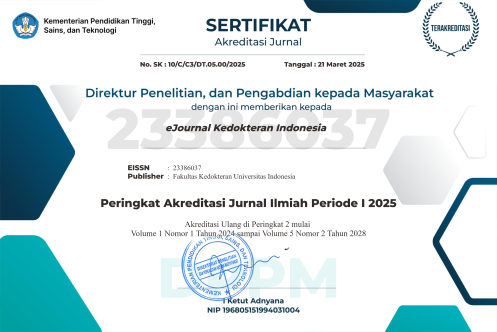The Role of Neutrophil Lymphocyte Ratio , Vitamin D, and NGAL as Cardiovascular Disease Marker in Chronic Kidney Disease
DOI:
https://doi.org/10.23886/ejki.9.35.192-6Keywords:
chronic kidney disease, hemodialysis, neutrophil lymphocyte ratio, Vitamin D, neutrophil gelatinase associated lipocalinAbstract
Chronic kidney disease (CKD) patients have higher risk to develop cardiovascular disease (CVD) than non-CKD patients. Neutrophil lymphocyte ratio (NLR) in CKD patients reflects inflammation status and role as complementary prognostic marker to evaluate cardiovascular risk in stage 3 to 5 CKD. High prevalence of vitamin D deficiency commonly found in CKD patients, leads to endothelial dysfunction and increase inflammation. NGAL is used as renal injury biomarker but nowadays NGAL has been known plays important role in CVD pathophysiology. CVD identification in CKD patients is necessary to obtain CVD risk and to stratify mortality earlier in CKD patients. This study aimed to obtain the differences and continued to obtain cut off of NLR, vitamin D and NGAL in CKD patients undergoing hemodialysis (HD) with and without CVD if the differences was significantly. A cross-sectional study was conducted in dr. Cipto Mangunkusumo National Hospital Jakarta, in December- February 2020. Total subjects were 83, consists of two groups with and without the CVD. There were no significant differences of NLR and vitamin D in CKD patients undergoing hemodialysis (HD) with and without CVD. The significant difference was found only in NGAL with cut off 5.64 ng/ml. NLR was lower, meanwhile vitamin D and NGAL were higher in CKD patients undergoing HD with and without CVD.
Downloads
Downloads
Published
How to Cite
Issue
Section
License
Copyright (c) 2022 Sri Suryo Adiyanti, yusra, Suzanna Immanuel, Diana Aulia, Fify Henrika, July Kumalawati

This work is licensed under a Creative Commons Attribution-NonCommercial 4.0 International License.



